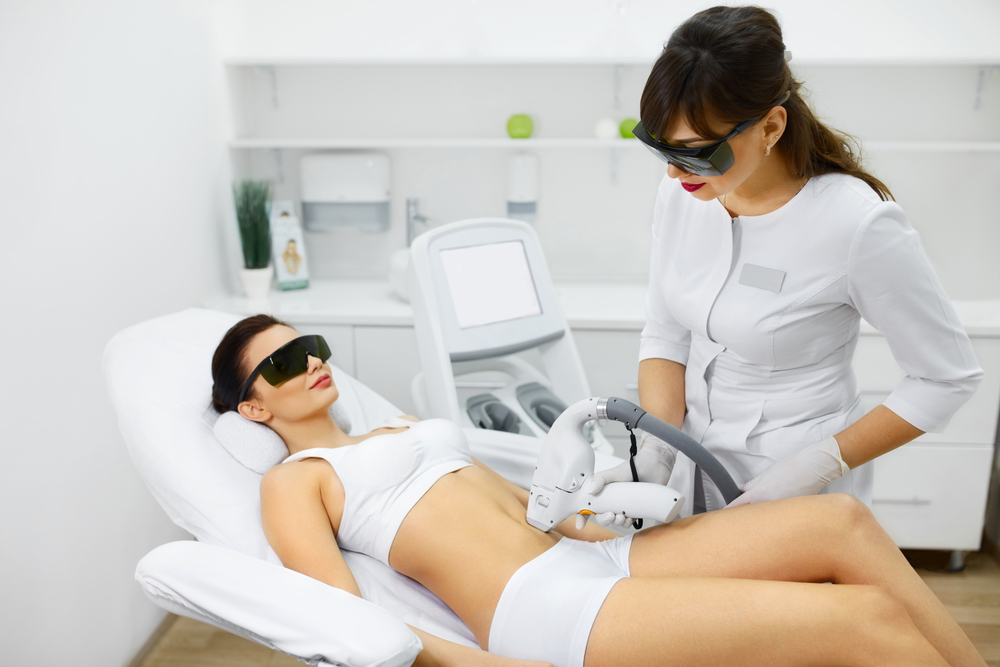Table of Contents
Introduction
Laser hair removal is a popular method for achieving long-term hair reduction, but it’s important to be aware of the potential risks and side effects associated with the procedure. Risks of Laser Hair Removal In this blog post, we will provide a comprehensive guide to understanding the risks involved in laser hair removal. By being informed about these risks, you can make an educated decision and take necessary precautions when undergoing laser hair removal treatments.
Temporary Side Effects
Temporary side effects are common after laser hair removal and typically subside within a few hours to a few days. These may include redness, swelling, or mild discomfort in the treated area. Applying ice packs or soothing creams recommended by your practitioner can help alleviate these effects. It’s significant to note that these side effects are frequently slight and transient.
Skin Discoloration
In some cases, laser hair removal can lead to temporary or even permanent changes in skin pigmentation. This risk is higher for individuals with darker skin tones, as the laser may inadvertently target the melanin in the skin, causing hypopigmentation (lightening) or hyperpigmentation (darkening) of the treated area. To minimize the risk of skin discoloration, it is crucial to choose a skilled practitioner who will adjust the laser settings based on your skin type and carefully monitor the treatment.
Burns and Blisters
Although rare, burns and blisters can occur as a result of laser hair removal. These risks are often associated with improper laser settings, inexperienced practitioners, or inappropriate aftercare. To minimize the risk of burns and blisters, it is essential to choose a reputable clinic or practitioner with expertise in laser hair removal. They will assess your skin type, hair color, and medical history to determine the appropriate laser settings and provide guidance on post-treatment care.

Eye Injury
Protecting the eyes during laser hair removal is crucial. Intense laser light can cause serious eye injuries, including damage to the retina. Both the patient and the practitioner should wear appropriate eye protection, such as specialized goggles, during the treatment. Ensuring that the treatment area is properly covered and taking precautionary measures can significantly reduce the risk of eye injuries.
Laser hair removal in the Jaipur area like Bapu Nagar and Shastri Nagar.
Risk of Herpes Reactivation
Individuals with a history of oral or genital herpes may be at risk of reactivation during or after laser hair removal. The laser treatment can potentially trigger a herpes outbreak, leading to painful blisters or sores in the affected area. If you have a history of herpes, it is important to inform your practitioner before the treatment. They may recommend antiviral medication to reduce the risk of reactivation or prescribe topical creams to alleviate any discomfort or symptoms.
Scarring
While uncommon, laser hair removal has the potential to cause scarring. This risk is higher for individuals with a history of keloids or hypertrophic scars. It is important to discuss your medical history and any existing scars with your practitioner before undergoing laser hair removal. They will assess the potential risks and help determine the suitability of the treatment for your specific situation. Adhering to proper aftercare instructions, such as avoiding sun exposure and applying recommended creams, can also minimize the risk of scarring.

Conclusion
When carried out by experienced experts, laser hair removal is generally regarded as a safe procedure. However, like any medical treatment, it is associated with some risks and potential side effects. By understanding these risks, discussing them with your practitioner, and following proper pre- and post-treatment guidelines, you can minimize the risks and ensure a safer laser hair removal experience. It is crucial to choose a reputable clinic or practitioner with expertise in laser hair removal to mitigate potential complications.
Remember to thoroughly discuss your medical history, skin type, and any pre-existing conditions with your practitioner before the treatment. This will allow them to assess your individual risk factors and tailor the treatment to your specific needs. Be proactive in asking questions about the practitioner’s experience, the equipment used, and the safety measures taken during the procedure.
During the treatment, ensure that both you and the practitioner wear appropriate eye protection to prevent eye injuries. Follow all instructions provided by your practitioner regarding post-treatment care, including the use of recommended creams, avoiding sun exposure, and refraining from activities that may irritate the treated area.
If you experience any unusual or prolonged side effects after laser hair removal, such as severe pain, blistering, or skin discoloration, contact your practitioner immediately for further guidance and evaluation. They will be able to assess the situation and provide appropriate recommendations or interventions if necessary.
